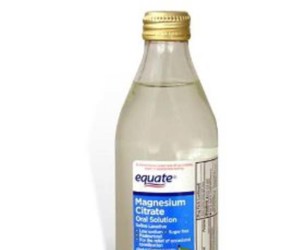Sucralose Side Effects
Sucralose is a artificial sweetener with zero calorie used in sugar-free products. Though it’s considered safe by the Food and Drug Administration (FDA), some are convinced it has potentially dangerous health effects.

What Is It?
Sucralose, CAS number 56038-13-2, E number E955, used as food sweetener, it is about 600 times as sweet as sucrose. Sucralose accepted as safe food sweetener in many food products. Sucralose is a artificial sweetener manufactured through chemical synthesis, available as white powder and granular. Sucralose is used in chewing gum, fruit spreads, jams, processed fruit, processed vegetables, candy, beverages, coffee, tea and salad dressing.
Possible Side Effects of Sucralose
# Releases toxins: sucralose can releases potentially toxic compounds chloroproanols during baking.
# Change INTESTINAL Flora : “Made from sugar, taste like sugar” is the slogan promoting Sucralose to the market. Yes, the manufacturing process of Sucralose is adding chlorine to sugar, yet increasing the number of chlorine atoms. Sucralose would not be digested due to this alteration. As a result it is calorie-free. can cause bloating, gas and diarrhea. When intake in large quantities, Sucralose may have a laxative effect. High dosage of sucralose may lead to lower healthy gut bacteria levels and may affect the absorption of certain medications.
GRAS Affirmation: Yes
Generally recognized as safe (GRAS) is an American Food and Drug Administration (FDA) designation that a chemical or substance added to food is considered safe by experts, and so is exempted from the usual Federal Food, Drug, and Cosmetic Act (FFDCA) food additive tolerance requirements. Sucralose is considered safe by FDA according to existing data and granted GRAS status.
Suggested Dosage
Dosage of Sucralose in large quantity may hurt our health, please follow the guideline of using Sucralose: ADI 0-40 mg/kg
* ADI: Acceptable Daily Intake
* MTDI: maximum tolerable daily intake
* Data source: JECFA Database of WHO
Special Populations Precaution
There is a lot of concern about diet and nutrition for these population, like Newborns, children, pregnant, sensitive to Sucralose populations. As with most things for Newborns, children, pregnant, it is always best to consult with your health care provider about what artificial ingredients are safe for you to use.
Sucralose is safe and suitable for all segments of the population. There is no evidence that Sucralose could have any side effects on these vulnerable populations.
Yet, some people still believe that the use of Sucralose should be limited in infants, children, and pregnant women.
How to avoid Sucralose
By reading the labels of the foods and drinks you purchase, you should be able to identify the sweetener. It will be listed as Sucralose, according to the FDA. It could also be labeled under the brand names.
As it’s a sugar replacement sweetener, you will largely find it in sugar-free or low-sugar products. Diet sodas may be sweetened with a combination of Sucralose and other artificial sweeteners.
Related Research
1. Early Life Stage (ELS) Toxicity of Sucralose to Fathead Minnows, Pimephales promelas. [Bull Environ Contam Toxicol. 2014 Aug] Author: Stoddard KI, Huggett DB.
2. Sucralose, a synthetic organochlorine sweetener: overview of biological issues. [J Toxicol Environ Health B Crit Rev. 2013] Author: Schiffman SS, Rother KI.

